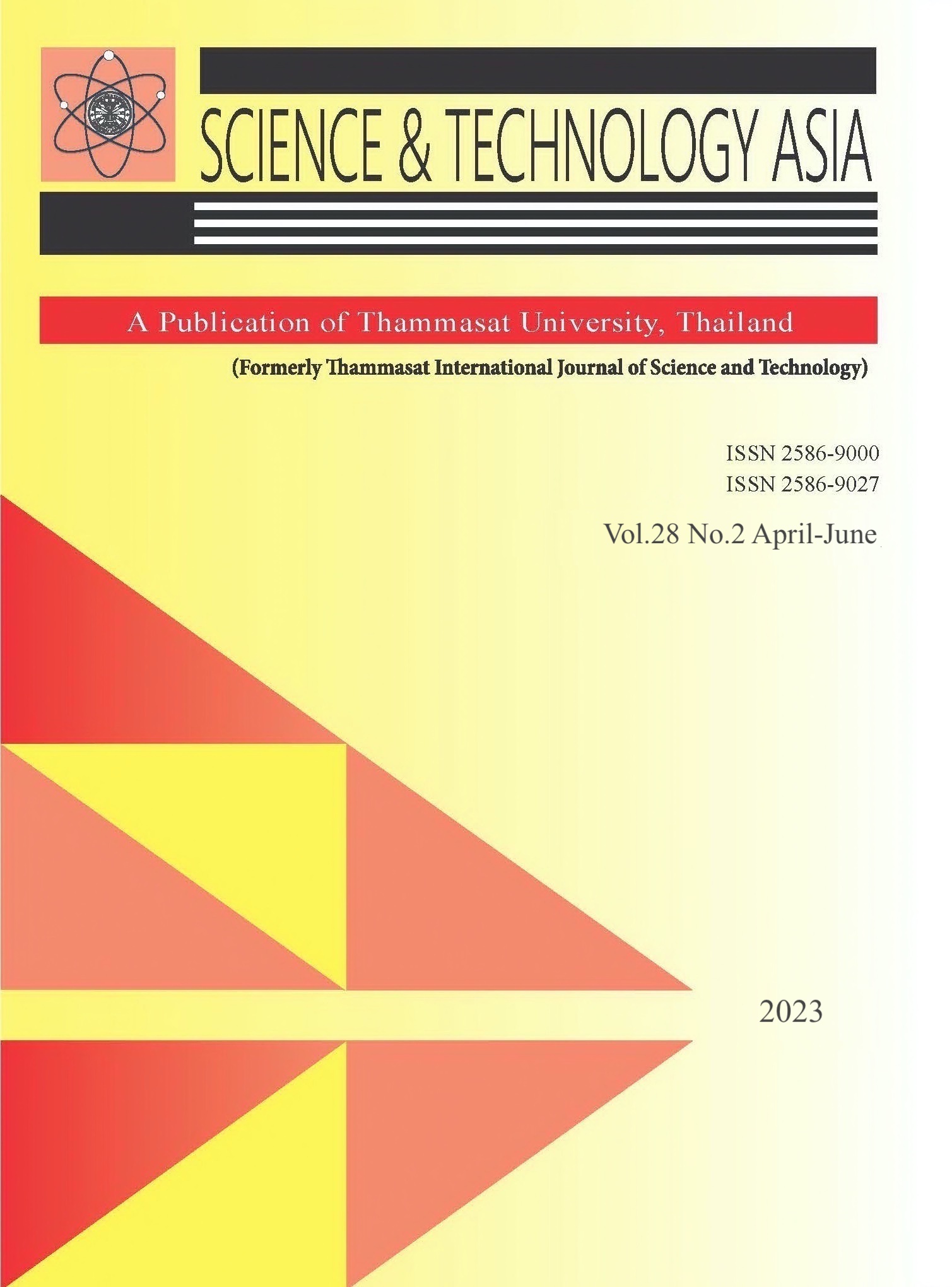Effects of Micro/Nano Bubble-Aeration Time on Removal of Rn-222 Contamination in Tap Water
Main Article Content
Abstract
In recent years, scientists and people have been concerned about an effect of radon (Rn-222) contamination in water and air which can induce the lung and stomach cancer. The radon contamination can be removed by two techniques: granular activated carbon (GAC) filters and aeration techniques, respectively. Whereas, micro/nano bubble (MNB) technologies have been studied in mechanisms and applied for many fields in the world such as the environment, industry, engineering, food processing, agriculture, and medicine. In this work, we have focused on the removal of radon contamination in tap water (community water supplies) through the air-MNB aeration. Tap water samples were collected at Non Sa-art, Sum Sao sub-district, Phen district, Udon Thani province, Thailand (GPS position of 17.5912725, 102.9264031). Each 1000 mL-tap water had been made the air-MNB aeration as 2, 4, 6, 8, 10, 15 and 20 minutes by the FB generator (model: RMUTL-KVM-01). After 10 minutes, 12 hours, and 24 hours of the air-MNB aeration process, 250 mL-aerated tap water had been measured the Rn-222 contamination by the RAD7 detector in operation mode of Wat250. Results show that about 92% of the Rn-222 is removed by the air-MNB aeration technique in a short aeration time. A major key of the removal of Rn-222 from the tap water is the time in making the MNB, which depends on an interfacial surface area, a bubble size and a concentration of MNB. Mechanisms of the removal Rn-222 contamination in the tap water will be presented and discussed in this paper.
Article Details

This work is licensed under a Creative Commons Attribution-NonCommercial-NoDerivatives 4.0 International License.


